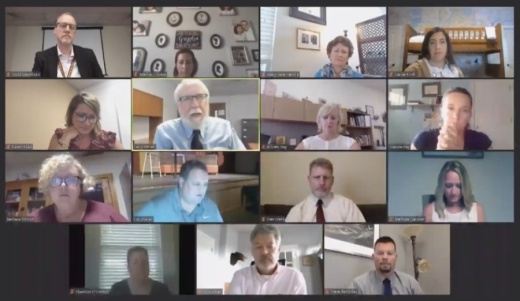Overall, 59.93% of the 7,018 parents who registered opted for on-campus instruction. Dripping Springs High School had the most students of any campus opt to return, with more than 65% of parents enrolling their students for in-person classes. Sycamore Springs Middle School had the least, with less than 54% registered to return.
Across all campuses, 95% of DSISD parents completed the registration forms; the district is still waiting for decisions from 370 families. DSISD is considering a blended instructional model that would see teachers simultaneously offer virtual and in-person instruction to students once in-person classes resume in mid-September.
"This four-week period really allows teachers to hone their craft in the remote world, and also students to really navigate those materials and resources collectively as a group," Superintendent Todd Washburn said at an Aug. 10 meeting of the DSISD board of trustees.
Across campuses, students may fluctuate between in-person and remote status if they test positive for COVID-19 at some point or exhibit coronavirus symptoms and are required to quarantine at home for at least a 10-day period. Some parents may also choose to opt back into remote learning at the end of the first quarter Oct. 9. Training teachers to deliver blended instruction will allow these students to have consistency and keep the same teacher and classmates as they alternate between learning models, Washburn said.
The principals of each DSISD campus weighed in on how teachers were preparing for this balancing act at the meeting.
"This is a challenge, yes, but [we are] changing our mindset to see this is an opportunity," said Kellie Raymond, the principal of Dripping Springs Elementary School. "Now we’re seeing the school beyond four walls.” An additional advantage to having individual instructors offer a consistent group of students both in-person and virtual instruction, district leaders said, is bolstered social and emotional learning opportunities for remote students as they maintain consistent connections with teachers and classmates.
Trustee Joanna Day expressed concern that teachers would not receive adequate training to handle remote instructional demands and virtual learners would feel like "second-class citizens" in the instructional environment.
However, campus leaders said the initial month of virtual classes should give teachers time to adjust to virtual learning demands and learn the best ways to connect with remote students.
“This model does present itself with some challenges and will require our teachers to stretch their skills and abilities and talents, but we’re also confident that they’re already stepping up to the challenge, and we’re ready and available to provide them with the support and resources to do this well," Washburn said.
Editor's Note: This story has been updated to reflect the correct number of parents who registered their child for fall classes.





